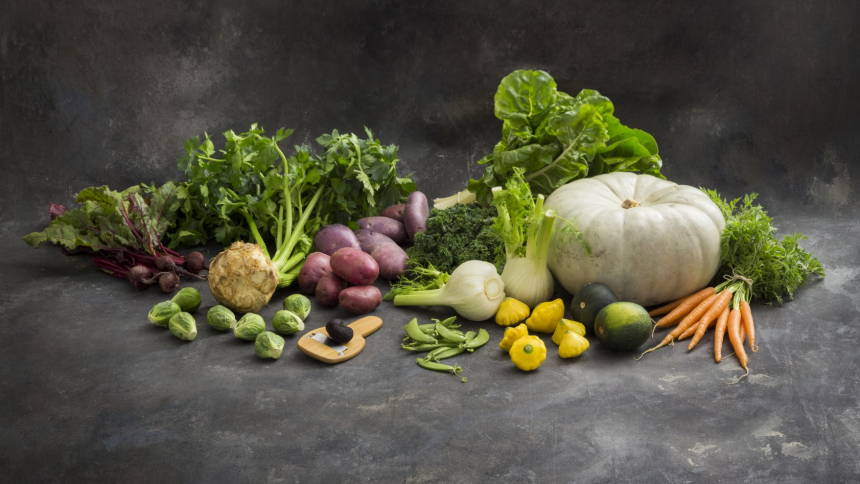
In the early 2000s, Western Australia’s Go for 2 & 5 campaign, encouraging us to eat two serves of fruit and five serves of vegetables each day, helped push home that message. In 2018, the British and American Gut Project upped the ante, recommending we eat 30 different plants a week, including seeds, nuts, wholegrain and spices. Research showed that people who ate a greater variety of plants had more diverse gut bacteria, which improved health and wellbeing, as well as increasing brain function. Here are some easy ways to up the intake in your house.
Drink your fill
Almost any fruit or vegetable can be turned into a smoothie with a cup of your favourite milk. Go green with a mixture of banana, spinach and avocado. Add a splash of vanilla essence and a dash of cinnamon. Prefer berry-based smoothies? Grab a punnet of Berry Sweet strawberries or Mountain Blue blueberries (or mix any berries together), add a couple of tablespoons of Omega Walnuts, some chia seeds and a dash of maple syrup to your chosen milk.
If you prefer juice, experiment with what’s in season. Watermelon and carrot, with a few mint sprigs, is such a refreshing drink in summer, while oranges (try Moora Citrus), apples and carrots provide a great pick-me-up – not to mention a healthy dose of vitamins C and A – in winter. Add some ginger for extra bite.
Make a meal of them
Whether they are the hero or a bit player, plants elevate every meal. For breakfast, add some chopped apple and walnuts to porridge, create a colourful breakfast bowl, or simply serve yoghurt (such as Brownes Dairy or Mundella Foods) with seasonal fruit, from a handful of berries to sliced Sweeter Bananas and stonefruit.
Dish them up as sides – try miso-glazed eggplant and spicy butter BBQ corn, for starters. Or make them the hero, such as with this super green lasagne or spin mushroom and sweet potato into a plant-laden shepherd’s pie.
Serve salads packed with a variety of plants, such as this fabulous fattoush salad – herbs count, too – or roast vegie and egg salad. Load up frittatas with green goodness and quiche with an array of colourful vegies. When the cooler weather rolls around, it’s easy to ramp up your intake with superb soups, such as kale and white bean or roasted red capsicum.
Serve them as snacks
If you really want to hit the 30-plus mark, or even just ensure you’re eating the old 2 & 5, think about what you eat between meals, too. Make it as easy (and delicious) as possible to ensure you keep it up.
- Chop carrot, cucumber, capscium and celery to enjoy with a little hummus (chickpeas are plants, too) or tzatziki dip.
- Keep a container of chopped walnuts, almonds and/or mixed seeds by your desk to nibble out throughout the day.
- Make breakfast bars or muffins laden with fruit, vegetables and spices. Freeze some to have the following week.
- Pack a piece or two of seasonal fruit, such as Denmark Heritage Apples, to have at any time.
Hide them (if you must)
There are many ways to sneak more of the good stuff past unsuspecting noses. If your children simply push veggies around their plate or leave their fruit untouched, incorporate as many plants as you can into dishes they love:
- Blitz a mixture of veggies (such as onion, carrot, zucchini and red capsicum) in a food processor as the base for bolognaise.
- Grate carrot or zucchini into any casserole or stew.
- Make fruity treats, such as green apple gelato or banana honey bread.
- Lift lasagne with a few handfuls of spinach, and add mushrooms to sausage rolls.
- Mix ½ cup mashed pumpkin or sweet potato into pikelets, pancakes or scones.
- Top crepes with oranges and pancakes with strawberries.
Want more ways to get plants in your diet? See our recipes page.